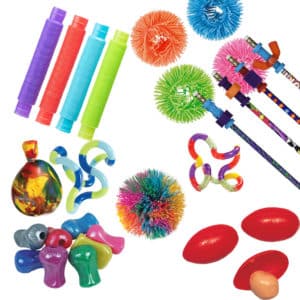When I was twenty-two years old, I wanted two things: 1. To be understood. 2. For people to think I was good at my job....Read more
Toys often turn on by themselves. There are a variety of explanations, both natural and supernatural. Electronic toys generally include sensors or motion detectors built into their designs to activate the toy’s functions.
Because of these sensors, the toy can respond to the child’s touch or motion. It makes it significantly more engaging. These sensors can malfunction, turning the toy on at an unfortunate time. A technology problem or the manufacturing process could cause this.
As a result, some situations may arise in which toys give the appearance of powering on without any command. Defects in the toy’s electrical components or software could lead to mistaking signals. Toys begin to function on their own eventually.

Do toys go off when the battery is low?
Built in low battery indicator lights:
Toys go off alone because most have built-in low-battery indicator lights. This may take the shape of a signal that is either auditory or visible. The type of toy and its design determines whether a toy stops functioning or continues to operate.
To preserve the power of the remaining battery, some toys may continue to function at a reduced capacity. Others may stop working entirely. If the batteries are getting low, they should be replaced or recharged so the device continues functioning.
Examine the storage area for the batteries to determine whether or not the toy needs new ones. Only use the specific size and type of battery that the toy maker recommends.
What does it mean when toys turn on by themselves?
Broken electronic components of the toy
Toys turning on all by themselves can be startling and disconcerting to children. There is likely more than one factor responsible for this occurrence. The toy’s electronic components become broken or don’t work properly. It could result in the toy activating without warning.
There is also the chance that the toy contains motion or sound sensors. It enables it to activate when they detect motion or noise.
If this is the case, then the toy would be activated automatically. In some situations, electromagnetic interference from nearby power sources can set off a toy. Fix the issues immediately to ensure the toy’s safety.
Tip:
Examine the toy for any obvious signs of wear and tear, such as shattered or missing pieces or wires, and note whether or not there are any. Examine the toy’s interior to determine whether there are any glaring flaws.
Contact the manufacturer to get some pointers on fixing the problem. Find out if any product recalls or complaints have been filed.
Why do toys turn on at night?
Toys equipped with motion or sound sensors
Toys turn on at night because of a wide variety of different potential triggers. The presence of some sensors inside the toy that are either motion or sound makes them turn on at night. It’s because of background noise or movement.
The movement occurs during the night. A toy might respond when it hears the loud noise of a car or shake of a blender that is nearby.
Alterations in temperature or humidity may affect the electronic components of toys. It can result in unanticipated activation of the toys. If a toy turns on by itself in the middle of the night, you should either check it to see if it has any problems. Think about turning it off while you sleep.
You could take out the batteries if the toy keeps activating itself at night. Switch off the power supply to see if it helps. If you want to see if the setting affects the toy’s ability to activate on its own, try moving it about to different locations.
Can toys turn on by themselves?
Yes, toys can turn on by themselves. There are certain circumstances in which toys can power themselves. As mentioned earlier, toys fitted with motion or sound sensors can be triggered into action by various ambient circumstances. This could give the idea that the toy turns on all by itself, but in reality, it only reacts to its environment.
Technological flaws or malfunctions
Remember that toys may turn on themselves due to technological flaws or malfunctions. It would help if you prepared yourself for this possibility. While uncommon, these disasters happen occasionally.
It is attributed to manufacturing flaws or normal wear and tear on the toy’s internal components. If there is no visible cause for a toy’s nonstop activation, you should contact the toy’s manufacturer or seek the aid of a trained expert.
Most people are at a loss for what to do when their toys turn themselves on. The interactive nature of the toy could catch children aback if they need to be adequately prepared for it. The phenomenon may scare some individuals. It can lead them to look for natural and supernatural causes to account for the toy’s behavior. But trust me. You are not the only one facing it!
Why do we play with toys?
We develop our creative capacities
We play with toys regardless of age. It can benefit in various ways from engaging in play involving toys. Toys can serve an important instructional function. We can develop our creative capacities, our capacities for innovation, and our capacities for problem-solving through play. The way all individual plays tell a lot about hidden aspects of personality.
Social contact and cooperation
Toys offer chances for social contact and cooperation since they may be used in various settings and by several individuals. This makes them particularly useful for young children. Playing with toys can benefit a child’s mental capacity.
It can increase emotional intelligence, gross and fine motor skills, and fine motor skills. Playing with toys as a hobby or interest may provide the same mental and emotional benefits to adults as it does to children.
Means of providing comfort
Time spent playing with toys can benefit the development of various cognitive skills. These cognitive skills include problem-solving, imagination, and creativity. Toys can provide comfort, help with unexpressed anger, provide a way for expressing and working through feelings, and release stored energy. Sharing and taking turns are just a few of the important social skills that may be developed through toys.
Why do kids love toys so much?
Kids love toys so much because of many reasons. Some of them are:
Imaginations run wild
Kids love toys so much because they can enjoy and allow their imaginations to run wild, a terrific way to have fun. They instill a sense of action in children and encourage them to take the initiative in the games they play. Children can think of many ways in which they can perform better. They also apply the same real-life skills when they are good at play.
Sense of mental stimulation
Toys are extremely important for the growth of children’s skills, interests, and identities during childhood. Toys appeal to a child’s sense of sight. It provides mental stimulation since they frequently have vivid colors, unique textures, and moving parts. Overall, children experience more health benefits as a direct result of the pleasure of playing with toys.
Many children form deep emotional bonds with their toys and confess to them. Children communicate their feelings to their toys through imaginative play, role-playing, and role simulation. Kids can infuse their playthings with personalities by naming them. We should love to see them dressing up and putting them in unique settings.
Why are some toys harmful to the health of children?
Some toys are harmful to the health of children because:
They put toys in their mouths
Some children’s toys are hazardous to their health for various reasons. Small pieces found in toys pose a choking hazard to some children, particularly infants and toddlers. They frequently put things in their mouths. Poor-quality toys may include dangerous pollutants such as lead or phthalates. It is absorbed through the skin and causes health problems.
Toys make the Sensory system overstimulated
A child’s sensory system is overstimulated and damaged by playing with toys that make an abnormally high noise. To limit the likelihood of children getting hurt while playing, it is critical to select toys according to their ages . Adhere to all safety requirements, and watch the children.
Potentially toxic ingredients
If you see that a toy poses a risk to a child’s health or safety, the toy must be thrown away. Before being sold, toys should be thoroughly inspected to ensure they do not include potentially toxic ingredients. Sharp edges or small bits that could cause a kid to choke are toxic ingredients.
How many toys should a child have?
How many toys should a child have, depending on their age? The stages of growth they are going through and their personal preferences also matter. The urge to overwhelm a child with toys is powerful. Too many toys risk the child losing interest in any particular toy for an extended time.
Feeling of superiority
We recommend you to switch out toys because having a surplus of playthings can encourage a feeling of superiority. It can lead to excessive indulging. Instead, we suggest you kindly switch out toys regularly to maintain a manageable number of available selections.
The child can form an emotional connection with the toys in this approach. Make the environment interesting. Encourage the imagination. Reduce the clutter so they may be able to balance it.
Tip:
Teach your child to eliminate things they are no longer interested in playing with. Donate them so they can learn the value of maintaining a regular cleaning and organizing routine. You should devise a system for rotating their availability.
It ensures that only a limited number of toys are available at any given moment. This is one tip to maintain a sense of freshness and simplicity throughout playtime.
Why do toys have age limits?
Toys have an age limit because of the following:
Optimal use and safety
Toy manufacturers provide age recommendations for optimal use and safety by considering a child’s unique maturity and skill. Conducting several types of risk and safety assessments often determines age limitations.
Smaller children won’t be able to make full use of certain toys. Older children might not find certain others engaging or entertaining due to their level of complexity.
The recommended ages for playing with toys consider not only the possibility of choking. The presence of small pieces and the potential dangers related to the toy’s level of complexity. Protect your kids from potential dangers by strictly adhering to age limits . Injuries and circumstances can result in harm.
Observe the age recommendations provided by the manufacturers of the toys. These recommendations consider the toy’s suitability for the child’s developmental stage and potential risks.
Is it normal for a boy to like girl toys?
Yes, it is completely normal for a boy to like girl toys. It is normal and appropriate for a child to express interest in playing with toys more commonly associated with the opposite gender. Through the medium of play, children can acquire essential abilities such as curiosity, imagination, and communication.
It is essential to refrain from restricting children’s toy selections based on cultural norms or gender stereotypes. Offer them the freedom to make their own toy decisions.
We will foster open-mindedness and promote equality if we embrace various toys. Allow children to try out various diverse play experiences. Make it clear that regardless of gender preconceptions, toys are for having fun and expressing oneself.
Encourage the youngster to pursue their interests and reassure them. Love them unconditionally and welcome them no matter their decisions. Encouraging your friends and family to accept diversity and inclusivity is a terrific approach.
Have a conversation about how important it is to respect the preferences of others, especially when it comes to toys.
Toys turn on by themselves because of many reasons, so if you think your house is haunted, don’t worry.! We have given all the possible explanations for toys turning on themselves. It will satisfy your nerves. Go on, follow the tips given and take a deep breath.
Related Articles:
- Can Kids Play With Silicone Toys
- Can Jellycat Toys Be Washed
- Why Does My Toddler Make piles Of Toys
- Can You Play Lego Dimensions Without The Toys
- Can Battery Operated Toys Get Wet

When I was twenty-two years old, I wanted two things: 1. To be understood. 2. For people to think I was good at my job. As a first time founder, I remember feeling under-qualified. I felt like an impostor—and it showed. I struggled to communicate my value in a way that my colleagues and potential investors could understand. I realized I needed to clarify my message and use social media as a tool to help me build my personal brand. This would help me look more credible, I thought. So I got to work. I updated my social media profiles, built a personal website, and began sharing my story online. The more content I shared, the more confident I became. And the more confident I became, the more credible I appeared. Now i am writing blogs for madeforkids.co.uk on different topics on kids.
- Latest Posts by Anna Vatuone
-
What Are The Uses Of A Drone
- -
What Are The Uses Of Playhouse
- -
How To Get A Child To Warm Up To You
- All Posts
